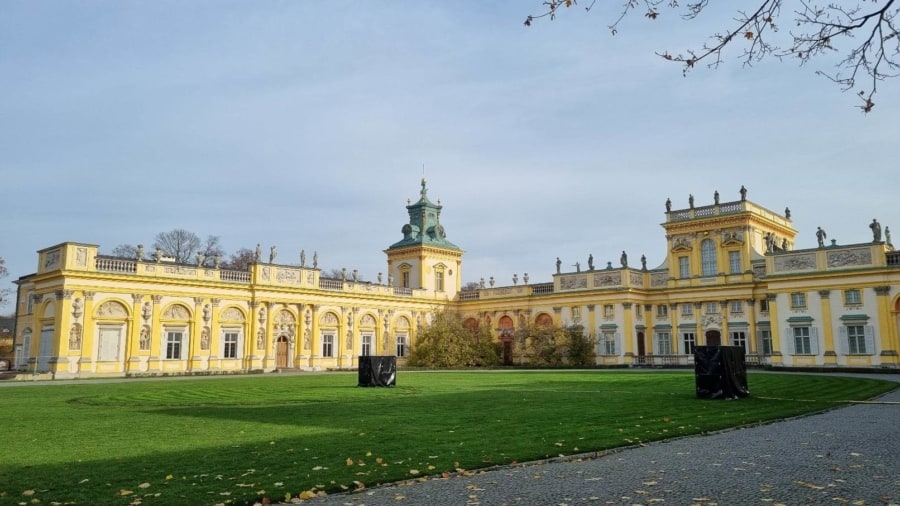Back in October 2022, my wife and I visited the Museum of King Jan III’s Palace in Wilanów.
Our three-night stay in Warsaw was a right royal occasion as we also visited the Royal Łazienki Park on day 2.
Anyway, this post is intended to provide you with a visual and historical account of Wilanów Palace. At the end of the post, I will add an FAQ section which deals with all the usual formalities such as booking tickets and how to get to the palace.
What is there to know about the district of Wilanów and the origins of Wilanów Palace?
Wilanów is a district of the city of Warsaw, located in the south-east of the city and immediately to the west of the Vistula River.
To appreciate how this now large district came into being, we need to go back to 1596. It was in this year that King Sigismund III Vasa, King of Poland and Grand Duke of Lithuania from 1587 to 1632, moved the capital from Kraków to Warsaw.
Kraków continued to be the place of royal burials and coronations. Warsaw, however, became the new political hot spot of the Commonwealth. According to the official Museum of King Jan III’s Palace at Wilanów guidebook (2019: 6):
… the outskirts of the medieval city [of Warsaw], the tall Vistual escarpment, and the Royal Route came to feature numerous courts and palaces of the nobility, who travelled to the city for parliamentary sessions and other political purposes.
On May 21, 1674, Jan Sobieski became King. He bore the name of Jan III. In 1677, King Jan III purchased a landed property at Milanów, roughly 10 km to the south of the Royal Castle – the official royal residence.
In the same guidebook, Philippe Dupont, consort of King Jan III, remembered the site the monarch chose for his palace thus (2019: 13):
[the palace was] at the banks of the Vistula, in a most beautiful corner of land that boasted an astounding view. There are ten or twelve big islands on the Vistula. Gazing at them, one is treated to the most exquisite effect of the numerous arms of the river …
Clearly, King Jan III had found his place.
Before considering the history of and stages of construction of Wilanów Palace, check out the video below from our visit to the Museum of King Jan III’s Palace in Wilanów:
King Jan III Sobieski’s Palace – The History and Stages of Construction of the Wilanów Residence
King Jan III changed the name of the village from Milanów to Villa Nova, and later to Wilanów. Agostino Vincenzo Locci, an architect employed by the King during his 20-year reign, designed the majestic palace.
Initially, a small brick manor was synonymous with Wilanów. It was more reminiscent of a landlord’s residence than a royal palace. However, essential extension works began in the 1680’s, lasting until the King’s demise in 1696.
The King’s manor slowly transformed itself into an expansive palace-and-park complex largely similar to French residences with their entre cour et jardin (lit. between the courtyard and the garden) style. The project merged elements of French palaces alongside typical features of modern Italian villages and Polish manors.
Wilanów Palace was composed symmetrically along a landscape axis. The building was divided into the northern part, with decorations highlighting the virtues of King Jan’s wife, Queen Marie Casimire. On the southern side of the Palace, decorations illustrated the King’s greatness. The decorations on the façade by the courtyard clearly celebrate royalty, as well as the political and military achievements of the monarch, through powerfully evocative antique models.
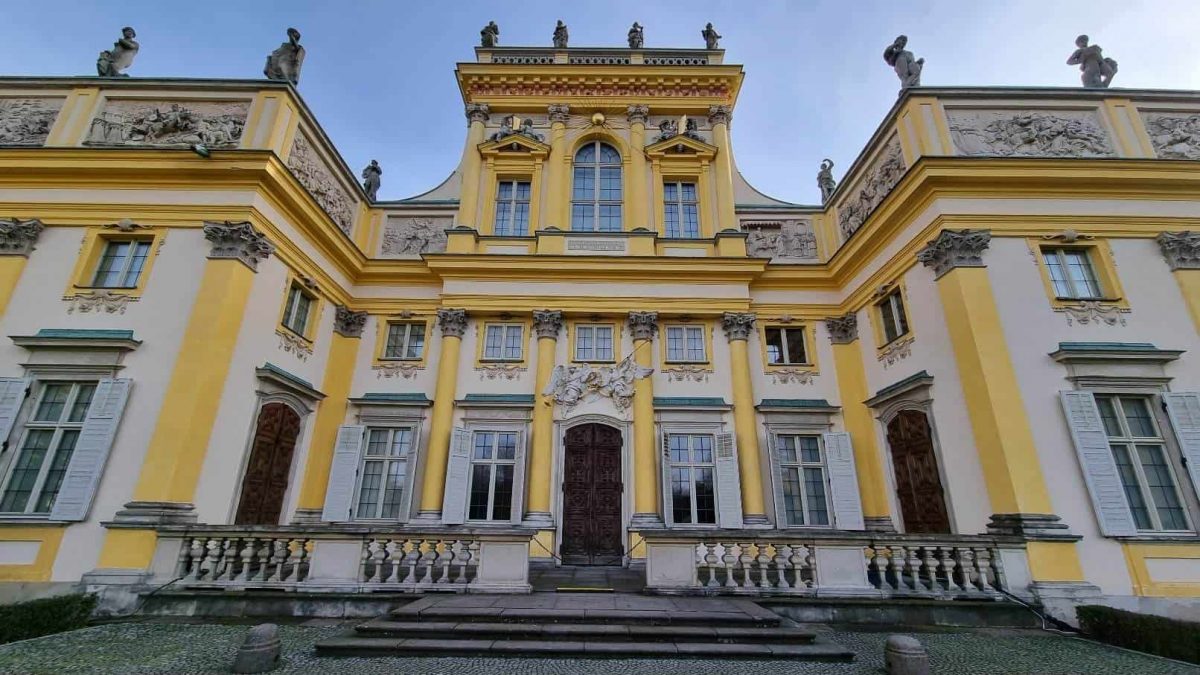
Wilanów after King Jan III
King Jan III intended to expand the body of the Palace with side wings. However, the monarch’s demise brought all extension works to a halt.
Polish noblewoman, Elżbieta Sieniawska, bought Wilanów in 1720 from Jan Sobieski’s youngest son, Konstanty. Her head architect was Italian, Giovanni Spazzio. Spazzio oversaw the reconstruction of the wings and interiors of the palace, as well as repairs in the galleries.
Moving forward to the final quarter of the 18th century. The owner of Wilanow Palace, Izabela Lubomirska, another Polish noblewoman, enlisted architect Simon Gottlieb Zug to build a Guardhouse, Bath and Kitchen in close proximity to the courtyard. All three constructions represent early Classicist architecture, both in terms of the simplicity of their shapes, and in their decorations.
In 1799, Izabela Lubomirska gifted the Place to her daughter, Aleksandra, and Stanisław Kostka Potocki, the daughter’s husband. They opened a museum at the Palace in 1805. Stanisław had two goals with regard to the museum:
- to depict the history of art from ancient to modern times;
- to revive the memory of the collections and deeds of King Jan III.
Hence, the Potockis sowed the seeds of the modern-day Museum of King Jan III’s Palace in Wilanów. The museum provided access to the royal apartments of Jan III and Marie Casimire. Furthermore, the public was able to observe memorabilia belonging to the Sobieski family, decorations from the times of King Augustus II, and a collection of Polish, European and Oriental art.
During the 19th century, architectural works focused mainly on interior refurbishment and adaptation for use as living space and a museum. In the middle of the century, the northern façade of the northern wing was reconstructed in Neo-Renaissance style.
Wilanów Palace interiors
I couldn’t possibly do justice to all of the rooms and halls inside Wilanów Palace. However, here are a few highlights from our tour of the interiors:
The White Hall
Undoubtedly, the two-story White Hall is the most imposing space in the palace. The room has witnessed many important ceremonies.
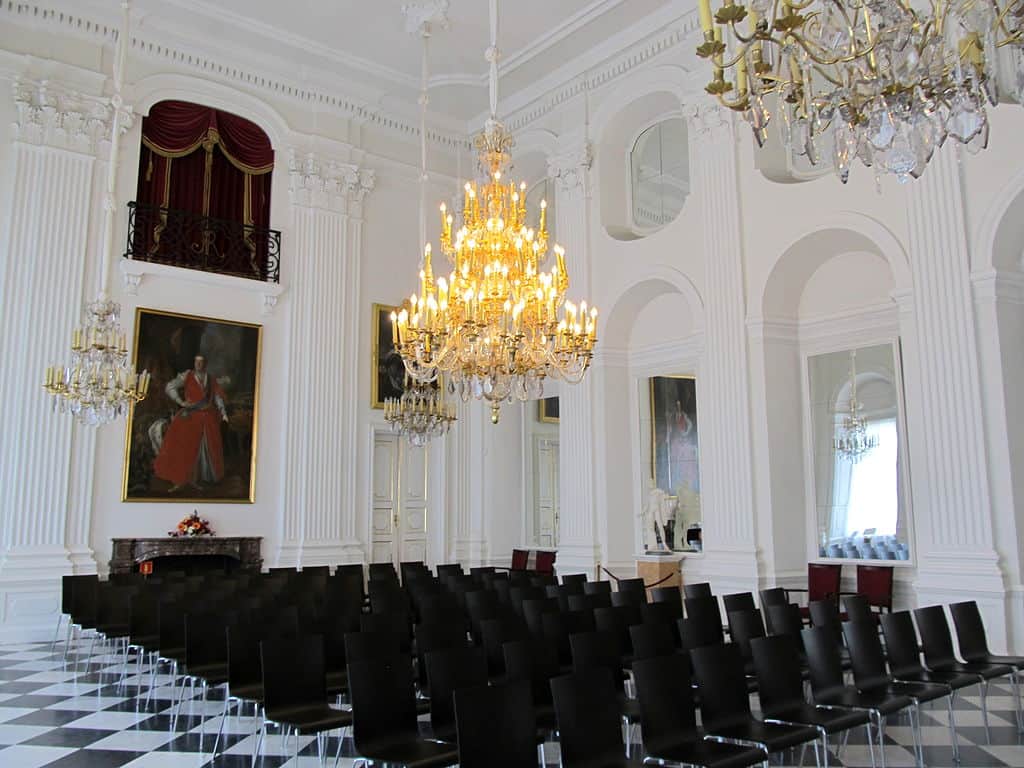
The White Hall houses portraits of kings and queens, including Jan III and Marie Casimire. Above the fireplace on the eastern side, you can find one of the most valuable works of art in Polish museum collections. It’s the majestic Equestrian Portrait of Stanisław Kostka Potocki by Jacques-Louis David.

The Queen’s Bedroom
Marie Casimire hosted guests in this bedroom.
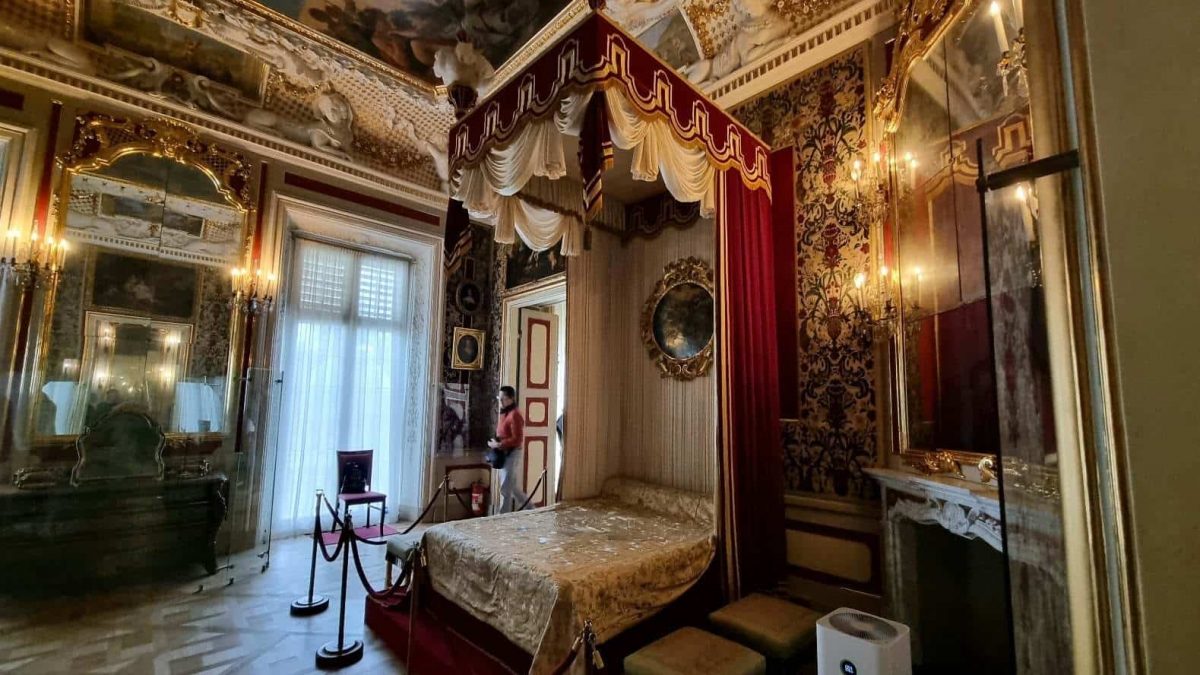
The Dutch Cabinet
Finally, I’d like to share a few images with you from the Dutch Cabinet. This room housed a collection of paintings by Dutch masters in the days of King Jan III.
The interior is decorated with furniture and mirrors from the Saxon era.
However, the vistor’s attention is immediately drawn to the painting on the ceiling – Welfare under Saxon Rule by Johann Samuel Mock. The painting is a splendid example of a quadratura – a Baroque painting that uses perspective contractions to create an illusion of three-dimensional architecture.
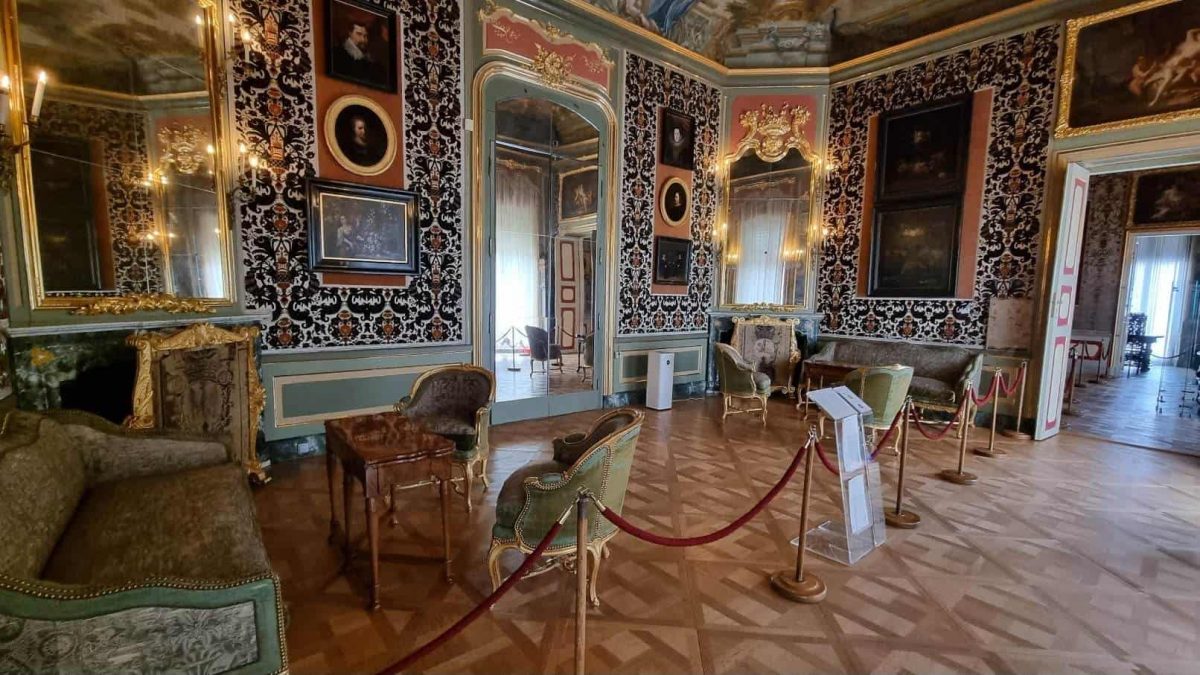
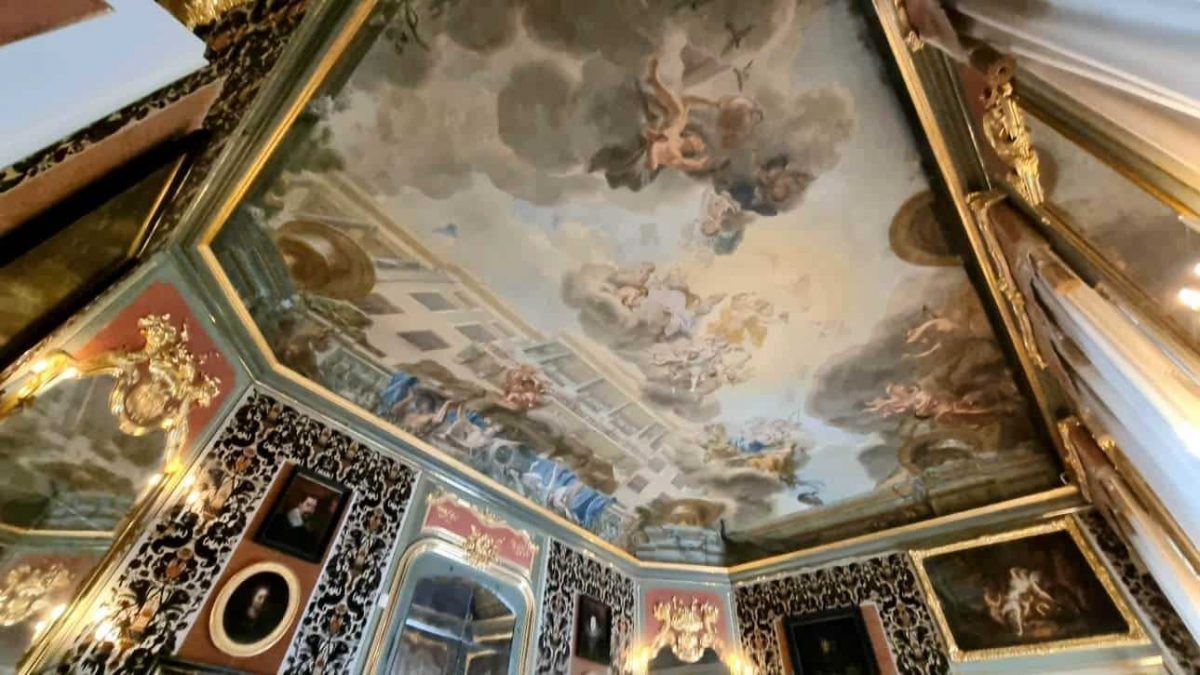
Wilanów Park
The Wilanów Park complex comprises gardens in a number of styles over an area of 45 hectares. Visitors can delight in a two-level Baroque garden, an English landscape park, a neo-Renaissance rose garden and an English-Chinese landscape park.
Let me share some images of the Wilanów park complex, including the Northern Landscape Park around Wilanowskie Lake:
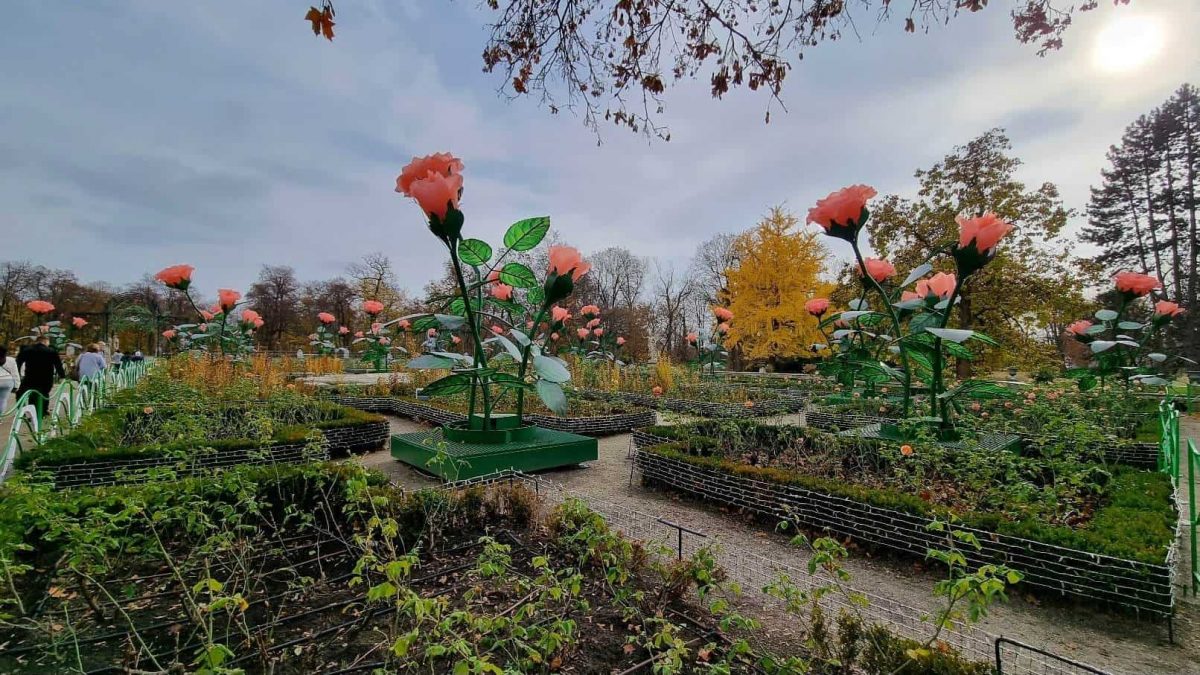

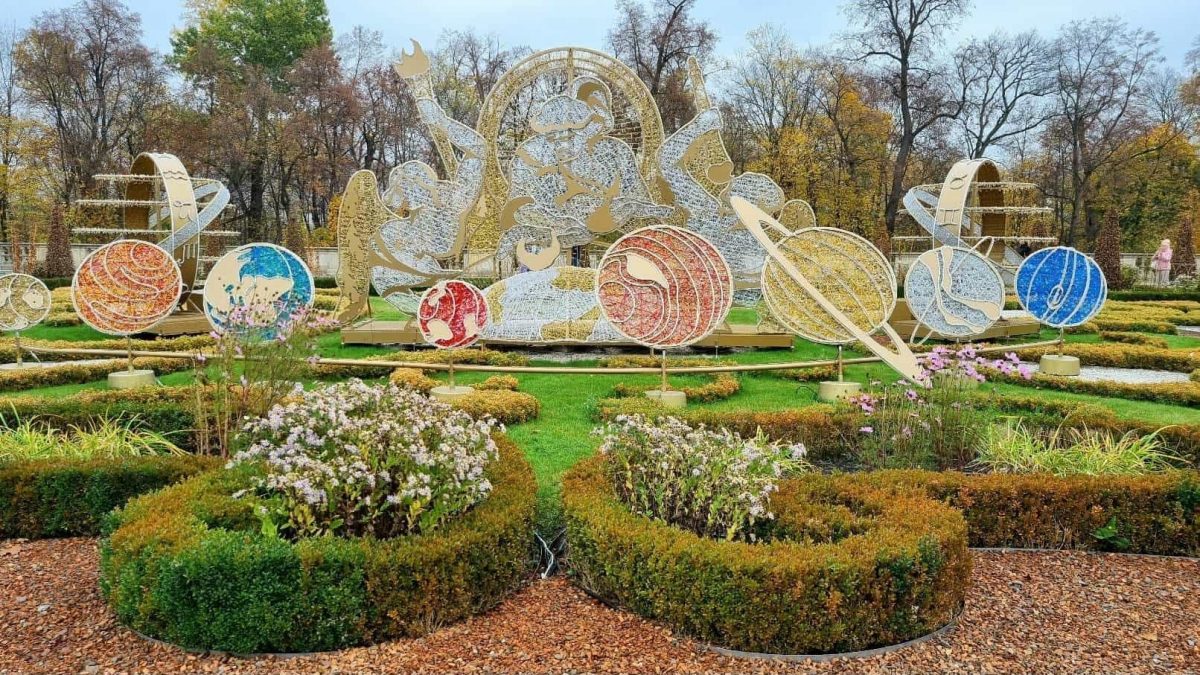
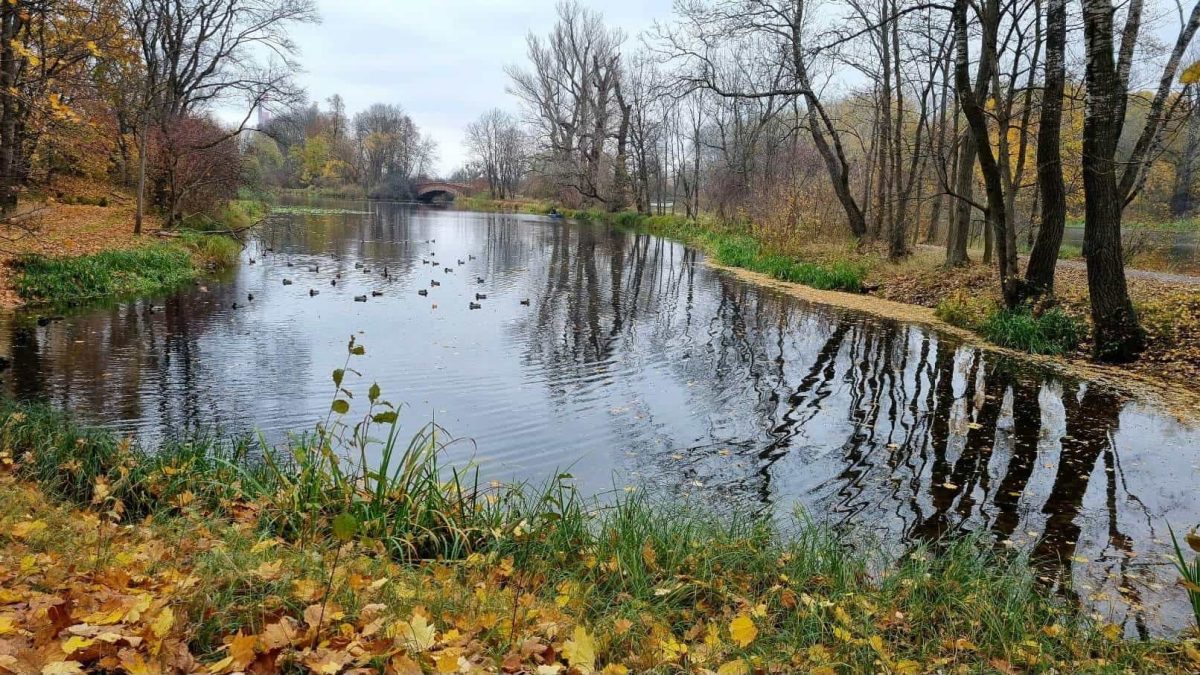
FAQ - The Museum of King Jan III's Palace in Wilanów
Using public transport, how can I get to Wilanów Palace from the Old Town area of Warsaw?
From the bus stop Pl. Zamkowy 01 on Krakowskie Przedmieście Street, you can take either bus 116 or 180 to Wilanów Palace and Park. The journey takes around 30 minutes.
Where can I park my car at Wilanów Palace?
There is a free public car park for guests located at 31 Stanisława Kostki Potockiego Street. Managed by the Wilanów District Office, the car park is open every day.
Paid parking areas, operated by the Museum, are located by Cendrowskiego Street and at Stanisława Kostki Potockiego Street 6A (access from Vogla Street). The parking areas are open every day.
When is Wilanów Palace open to visitors?
Wilanów Palace is open every day of the week from 10:00 until 16:00 (last admission at 15:00) except Tuesdays when the palace is closed.
Please note that the palace will be closed from December 15, 2025, until January 30, 2026.
Is it free to enter Wilanów Palace and Park on a certain day of the week?
Thursday is the day of free entry to both Wilanów Palace and the Park complex.
You will need to collect a free pass at the ticket office or from one of the ticket vending machines. You cannot book passes online for entrance on Thursdays.
Have in mind that the number of tickets is limited. Tickets are allocated on a first come, first served basis.
What are the opening hours of Wilanów Park, the palace courtyard and the palace's historic gardens?
The Wilanów Park and historic gardens are open every day until December 31, 2025.
Both the park and gardens are open from 9.00 a.m. The closing time depends on the time of year. The latest closing time is 21:00 p.m. throughout the summer months, while the earliest closing time is 15:00 p.m. (usually 2 November until the middle of January the following year).
Entry to Wilanów Park is free on Thursdays.
Where can I buy tickets for the Museum of King Jan III’s Palace in Wilanów online?
Tickets for individual visits and selected events can be bought either at the museum ticket office or via the Palace’s online reservation system.
How much do tickets to Wilanów Palace cost?
A regular ticket to Wilanów Palace costs 50 zł.
A ticket to the Palace also entitles you to visit the park.
A concessionary ticket costs 30 zł.
Children under the age of six can enter Wilanów Palace for free.
If you wish to use an audioguide in Wilanów Palace, you will have to pay an extra 14 zł.
How much do tickets to Wilanów Park cost?
If you don’t wish to enter the Palace, a regular ticket to enter the park complex costs 10 zł. A concessionary ticket costs 5 zł.
Can I book group tickets for Wilanów Palace?
You may buy tickets for group visits with your own guide, for educational activities for children and youths as well as for theme walks for adults via the online reservation system.
You can purchase a minimum of 10 tickets. If you are planning a group visit with your own guide, educational activities or a theme walk, the group should contain no more than 27 participants.
Are there any important conditions attached to the purchase of tickets to Wilanów Palace?
According to the Palace’s official website:
A reservation for a given week has to be made by Tuesday evening in the preceding week at the latest. Ask the reservation office if there are any tickets left for events in a given week, if they are not available online anymore.

